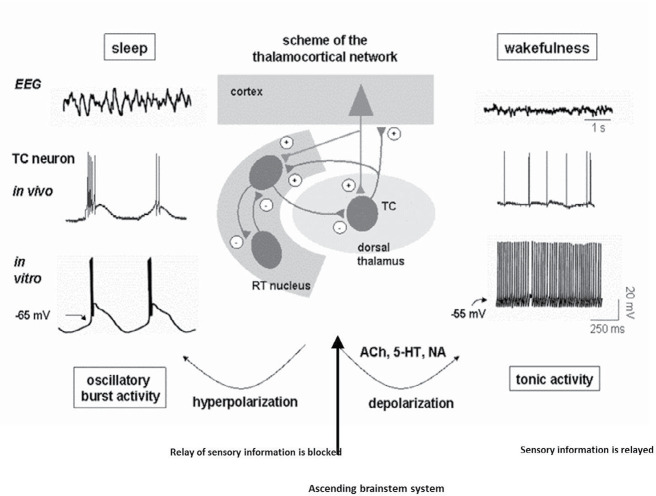Figure 1.
The cellular and network activity of thalamocortical circuit during an absence seizure
During periods of absence seizure activity (like sleep or drowsiness), the neurons are hyperpolarized and show rhythmic burst firing, which spreads towards the reticular nucleus and the cortex, then the system starts to oscillate in synchrony, which is visible on a large scale EEG as high amplitude and low frequency (3–4 Hz). Under these conditions, the system is incapable of receiving information from the periphery. In wakefulness state, relay neurons receive sensory inputs from the environment and the brainstem (locus seroluos, raphe magnus, the reticular nucleus of the pons and hypothalamus nuclei), then project them into 3–5 layers of the somatosensory cortex. After processing, it sets a series of nerve branches from layer 6 neurons of the cortex to relay neurons. Thalamocortical and corticothalamic neurons via excitatory axon collaterals evoke the reticular nucleus of the thalamus. Activation of these neurons leads to thalamic neurons depolarization and showing tonic single-spike activity. In this state, the conscious perception of our environment appears ( Crunelli & Leresche, 2002; Sejnowski, McCormick, & Steriade, 1998; Steriade, 2005)

